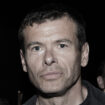
Psychologist
How to Prepare for Races Where Sleep Is Scarce
Some contemporaries attributed to Leonardo da Vinci the characteristic of being able to endure for many days, sleeping only for very short intervals. It seems that this ability was the result of a very specific need: to be able to complete large frescoes before the colors used dried, becoming unalterable.
Today, the cultivation of the ability to stay awake is no longer pursued in the artistic field; instead, it is in the realm of sports that sleep deprivation (SD) proves to be one of the most powerful limiting factors in performance, sometimes an insurmountable factor.
© 2023 TORX | Photo: Zzam.Agency
The athletes who first had to deal with its devastating effects were solo transoceanic sailors engaged in single-handed ocean races. It was unthinkable to abandon the helm and course for an entire night. It is in this field that the first systematic experiences of addressing deprivation developed: the so-called "micro-sleeps," modern descendants of Leonardo's short naps.
In the world of ultratrail, sleep deprivation significantly influences and limits performance in races with distances exceeding 150 kilometers. Today, many athletes participating in such races often mention "micro-sleeps," but the term is sometimes used loosely. It is used to indicate a myriad of techniques, approaches, and diverse practices. My goal is, therefore, to bring some order to these concepts, distinguishing between what is scientifically documented and what is instead a legacy of urban legends.
The first thing to understand is the real consequences of total and partial sleep deprivation. Not everyone is aware of them. I will focus on the more immediate aspects, those that the ultratrailer more easily perceives, which are of a mental and behavioral nature. There are also other effects more related to the somatic sphere, whose effects take more time to be noticed, and I will limit myself to listing them here: the progressive weakening of the immune system, alterations in the secretion of hormones such as GH and cortisol, deterioration of metabolic processes (along with a decrease in leptin secretion leading to uncontrolled appetite increase), and finally, the impact on the cardiovascular system, with a constant rise in blood pressure that can have serious consequences. These are the mental and behavioral effects:
Deterioration of all cognitive abilities, particularly those related to attention
Numerous studies demonstrate that even relatively short periods of sleep deprivation (DDS) lead to a decline in cognitive abilities, such as the ability to memorize elements or focus on a stimulus. Cognitive processes are involved in virtually all human activities; for instance, concentration is crucial when running downhill or on technically challenging paths, when finding the right route and avoiding getting lost, or when diverting attention from acute fatigue or pain.
Emotional hyper-reactivity emotional
Sleeping little or not at all makes managing one's emotions, especially negative ones, more difficult. The mood tone changes, becoming more irritable, and the individual becomes more aggressive, irritable, and sensitive to frustrations. A brief conversation on the topic with some volunteers at the Life Bases will be enlightening. This seems to be due to the fact that sleep deprivation (DDS) puts the prefrontal lobes of the brain in crisis, which normally inhibit impulsive behaviors.
Impairment of postural balance and increased risks of falls and injuries during running
A study published with some colleagues has shown that fatigue and sleep deprivation during a race like the "Tor des Géants" can increase difficulties in maintaining balance and posture due to fatigue in the central nervous system and specific areas of the brain.
The ultimate and combined consequence of all these effects is a state where the runner can no longer stay awake: it's as if the brain continuously tends to shut down on its own. The individual becomes dazed, immediately tends to fall asleep, and starts dreaming as soon as what's left of their attention catches a fixed stimulus, like the beam of their own headlamp. Continuing becomes extremely difficult: our hero tries to sing, talk to themselves, even slap themselves. It's all in vain. They remain there, sometimes in the grip of hallucinations.
To avoid finding themselves in these situations, the solution often spontaneously resorted to is precisely the micro-sleep: organizing oneself to have short stops where a few minutes of sleep are taken. But does the micro-sleep "work"? Does it genuinely improve the subject's situation, or is it just self-suggestion? And what happens in the brain when we enter micro-sleep?
There is a very interesting study that helps us understand how the use of micro-sleep probably has a real basis in our neurophysiological functioning. A study evaluated the encephalographic quality of sleep in a subject who had walked 338 miles in a state of partial sleep deprivation. What is striking is that as soon as the subject goes to bed, there is a rapid entry into the Slow Wave Sleep (SWS) phase. Slow Wave Sleep is a term used to indicate deep sleep. In this phase, the brain's metabolic activity is reduced, and the brain records the lowest consumption of oxygen and glucose. James Horne, a British researcher and author of a famous book on sleep, argues that unlike voluntary muscles, the brain cannot relax or slow down its activity during wakefulness. So, as long as brain activity is not slowed down, the brain cannot engage in repair and revision activities. The purpose of the SWS phase is precisely to allow such activities. The surprising discovery in the study of the walker in partial sleep deprivation is this: if the sleep space is reduced and compressed into small, more or less frequent intervals, the body organizes itself to optimize times. It establishes priorities and immediately enters the phase that is most important for survival, deferring less fundamental phases in the short term, such as those related to the consolidation of learning and memories.
The strategy of micro-sleeps, therefore, has a real validity; it is rooted in the self-organizing abilities of the brain system, which is capable, in order to ensure survival and a minimum of basic functioning, of changing its way of sleeping by adapting to short intervals of sleep. These intervals – in my direct experience or related to the observation of others' experiences – have an optimal duration if they are between 20 and 40 minutes. However, be careful not to lose the sense of limitation: it is still an emergency strategy. Unfortunately, it seems that, despite what is said, humans are not made to go without sleep.
On this note, I would like to mention a study promoted by the Research Center on Human Performance (CERISM) and the Department of Neurosciences at the University of Verona that will take place at Tor450. The study aims to investigate the effects of sleep deprivation and stress on cognitive abilities in athletes over 50, to understand whether it is true that an older athlete handles difficulties and stress better. It seems so, but I'll tell you more about it another time.
1. Pilcher, June J. – Walters, Amy S. , How sleep deprivation affects psychological variables.., Journal of American College Health; Nov97, Vol. 46 Issue 3, p121, 6p, 2 charts; Kim, Dai-Jin, Lee, Heung-Pyo, Kim, Myung Sun, Park, Yu-Jin, et al. The effect of total sleep deprivation on cognitive functions in normal adults male subjects, International Journal of Neuroscience; 2001, Vol. 109 Issue 1/2, p127
2. Seung-Schik Yoo, Ninad Gujar, Peter Hu, Ferenc A. Jolesz and Matthew P. Walker, The human emotional brain without sleep — a prefrontal amygdala disconnect, Current Biology, Volume 17, Issue 20, R877-R878, 23 October 2007
3. Myles WS., Sleep deprivation, physical fatigue, and the perception of exercise intensity, Med Sci Sports Exerc. 1985 Oct;17(5):580-4
4. Alterations in Postural Control during the World’s Most Challenging Mountain Ultra-Marathon, Degache F, Van Zaen J, Oehen L, Guex K, Trabucchi P, et al. PLoS ONE, 2014, 9(1): e84554. doi:10.1371/journal.pone.0084554
5. Davies B, Shapiro CM, Daggett A, Gatt JA, Jakeman P, Physiological changes and sleep responses during and following a world record continuous walking record , Br J Sports Med. 1984 Sep;18(3):173-80
6. James Horne, Perché dormiamo. Le funzioni del sonno negli esseri umani e negli altri mammiferi, 1993; Armando Editore
© 2009-2024 by VDA Trailers SSDrl
Any dissemination for commercial purposes of photographic or video images captured during the event, via any means (internet, social networks, TV, press, magazines, etc.), without written authorisation from the organisation is prohibited. GTC®, GTC100™, GTC55™, GTC30™, TORX®, TOR®, Tor des Géants®, Tor des Glaciers™, Passage au Malatrà™, Tot Dret™, TOR450™, TOR330™, TOR130™, TOR100™ and TOR30™ are trademarks owned or used exclusively by VDA Trailers. Any communication of the event or use of images of it must be done in observance of the name of the event and registered trademarks, subject to agreement by the organisation.
Valle d’Aosta Trailers SSDrl | Via Roma, 98 | 11013 Courmayeur | CF/P.IVA 01139360075 | Nr. Iscr. Reg. Imprese AOSTA AO-70629
